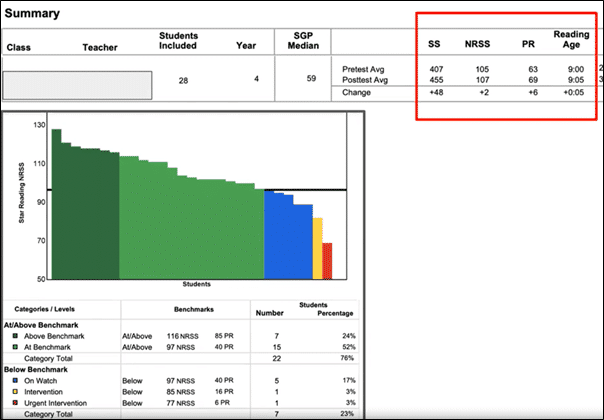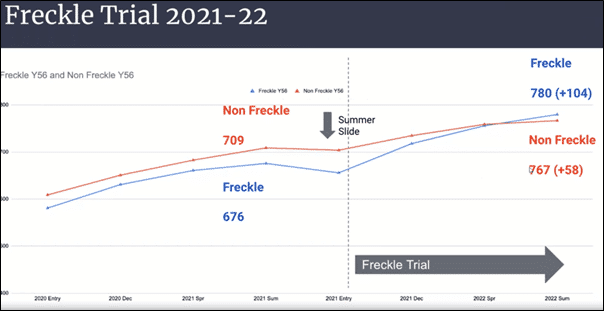We want all our pupils to aim high and demonstrate the strong values that will make them good citizens and great contributors. We provide a curriculum that aims for pupils to master the basics whilst offering a broad range of subjects to develop their knowledge and skills whilst releasing their creativity and curiosity.
As Headteacher Martin Kelsey explains, there has always been a focus at The Raglan Schools in North London on using the best available technology alongside a robust curriculum to improve pupil outcomes:
“We want all our pupils to aim high and demonstrate the strong values that will make them good citizens and great contributors. We provide a curriculum that aims for pupils to master the basics whilst offering a rich and broad range of subjects to develop their knowledge and skills whilst releasing their creativity and curiosity.
To help achieve these aims when it comes to literacy development, we started using Renaissance solutions such as Star Reading and Accelerated Reader over 10 years ago. This was followed by the introduction of myON in 2019 to both supplement library books and provide us with additional reading engagement and analysis.”
In 2018, Martin was looking to support the school’s numeracy development strategy and decided to implement Star Maths to better understand his pupils’ maths progress and attainment. Renaissance’s newest maths practice solution – Freckle – was introduced in 2021 to provide all pupils, especially those identified by Star Maths as needing intervention, with personalised practice at just the right level.
Martin (a.k.a. @HTMISTERK) first shared a glimpse of the combined impact of Star Maths and Freckle on the average Scaled Scores of his Year 5 and Year 6 pupils in a dedicated twitter thread. Further to a recent webinar in which he discussed Raglan’s wider approach to assessment and practice, we invited him to share the full story here.
“It’s been interesting to see Renaissance solutions evolve from isolated book quizzes to adaptive testing and instant results – it’s actually quite amazing! Star Assessments are now well embedded in what we do with the teaching of reading and maths, and they proved invaluable given the lack of statutory assessments due to COVID.
We were nervous as to what our 2022 SATs results would look like. However, we continued conducting Star tests throughout this time, and the data showed us that pupils would come out quite well for their first SATs tests in two years. In fact, the results were very good; we achieved 89% of children meeting the minimum requirement for reading and 91% in Maths.
We had the confidence that we would do well because we had that internal assessment data. Both Star Reading and Star Maths allows us to instantly check at any time that pupils are on track and we, as a school, are where we need to be. All the crucial questions that I want to see as a Headteacher, such as whether pupils are on track, below or above benchmark, are answered in the Star data.
There is no limit or additional cost to the number of Star Assessments that can be administered throughout the year, so when you have a series of data – we implement four assessment points – you can see your outliers. You will find isolated anomalies with any assessment, but we find the series of Star Assessment data to be both reliable and accurate.
Furthermore, the data from Star allows us to easily compare specific year groups to their peers up and down the country. I like to refer to the Scaled Score, which you want to see rising throughout the academic year.”
Martin explains more about what the data from Star Assessments tells him in this anonymised Star Reading Screening Report from a Year 4 class at his school.

The Raglan Schools – Star Reading Screening Report
“This Screening Report is a brilliant visual representation of how the pupils are currently performing against the class benchmark in reading:
- Pupils in dark green are comfortably reading above the class benchmark.
- Pupils in green are meeting age-related expectations.
- Pupils in blue are on the cusp, so they may need additional support to help them move over to green.
- Pupils in yellow and red require intervention or urgent intervention, likely to be pupils with SEND, which the staff will most likely already be aware of and will be given the necessary support.
The Norm-Referenced Scaled Score (NRSS) is a class-standardised score that shows average improvements over time. In our case here, we can see that the class average has increased from 105 to 107. Meanwhile, the Percentile Rank (PR) also provides comparisons with the rest of the country, and here it has also gone up from 63 to 69 – so I know that these pupils are performing better than 69% of their peers nationally. I can also see that this class has made five months’ progress since their last Star test, bringing their estimated Reading Age to nine years and five months.”
Following a decade’s use of Star Reading and Accelerated Reader, Martin and his team decided to explore whether Renaissance’s Star Maths and Freckle for maths solutions could have a similar impact on pupil outcomes in Years 5 and 6. In July 2022 he first shared these results in a dedicated twitter thread.
“We asked select classes to participate in the Freckle trial throughout the 21-22 academic year – and when we looked at the data, we were pleasantly surprised with what we saw. The blue line represents children who used Freckle, who started the year with an average Scaled Score of 676, and the orange line represents non-Freckle users who had an average SS of 709.”

The Raglan Schools – Freckle Trial 21-22
“As you can see from the scores in the combined chart, those receiving maths practice from Freckle throughout the academic year made nearly twice the progress of their peers who did not use the program.”
The fact that Freckle is designed to work with Star Maths so that the questions and challenges presented to pupils are tailored towards their actual ability is likely to have helped their improved performance, as Martin explains:
“The data suggest that Freckle did make a difference to these older children – perhaps because they start to take more responsibility for their work at this age, just as we have seen in their Accelerated Reader usage and results.
As a result, Freckle is now a key factor in preparing pupils to be SATs-ready by May. We’re also now allocating a lot of scaffolding learning support for pupils, especially those who need to catch-up ahead of SATs.
For me, this shows the powerful effect of combing reliable, robust, and trusted assessment data like we get from Star Assessments with personalised practice from Accelerated Reader or Freckle. When properly implemented, the results are outstanding.”
Click here to learn how your school can utilise Renaissance solutions to support your literacy or numeracy development strategy.
